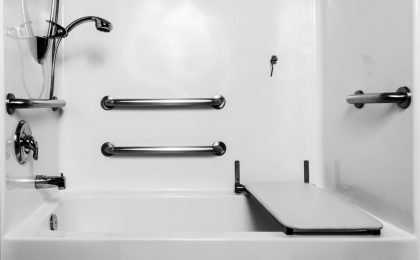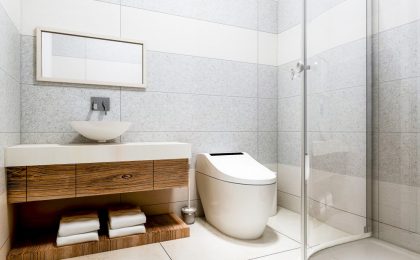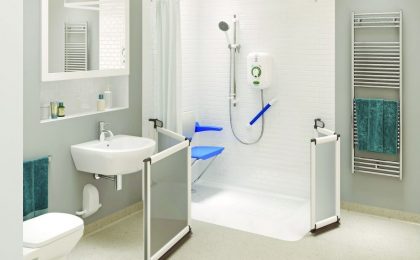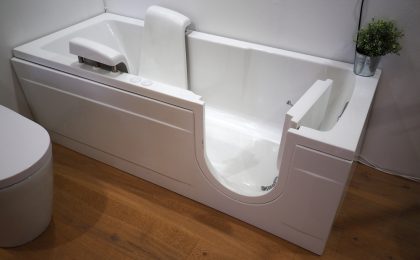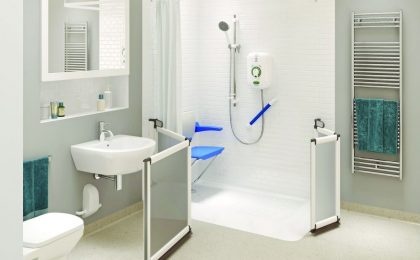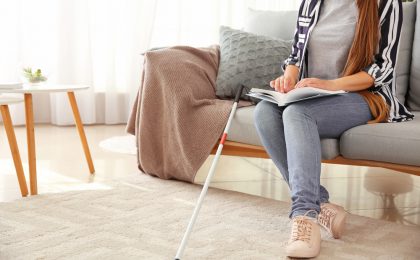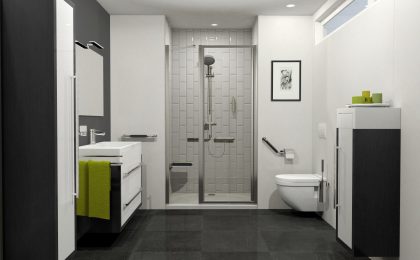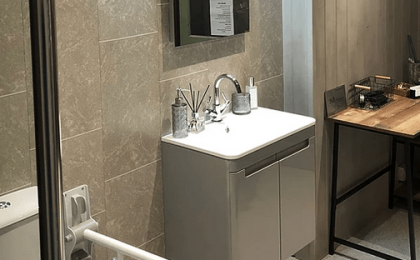If yourself or a family member uses a wheelchair, there are a few adaptations you can make
around your home to make it safer and easier to navigate. In this article we’ll be exploring 10 different ways you can make your home more wheelchair friendly. By making a few of these changes you can ensure safety, create comfort, and enable autonomous living.
10 Top Tips For A Wheelchair Friendly Home
- Replace steps with ramps:
Steps present a hazard not just those in wheelchairs but for anyone with limited mobility. You may have a step or two leading up to your front door, or within your home such as from an interior landing to a living room. Several ramp styles exist to meet any needs; collapsible ramps allow for easy storage, portable ramps mean you can quickly transform any step into a wheelchair accessible entry on the go, and threshold ramps make an entryway instantly accessible.
- Install a stair lift:
Stair lifts come in a wide variety of styles, and can be installed as a permanent home modification, or can be an on-the-go solution, such as a portable stair climber. Stair lifts turn multi-level homes or even front yard steps into accessible homes for those with limited mobility. Installing them will level out your home and create a safe, accessible space.
- Wide doorways and halls:
Wheelchairs and walkers take a lot of space, so the wider the better. Most doorways are 23–27 inches wide, but it is recommended that a door frame needs to be at least 32 inches wide in order to accommodate a wheelchair. French doors are a great option.
- Disabled wet room:
A disabled wet room is a great way to make your bathroom wheelchair friendly. It offers completely unrestricted access to all areas of the bathroom including the shower area. All the water is directed towards the centralised draining point and the walls and floors are waterproof, making it easy to maintain. We are specialists in mobility bathrooms and disabled wet rooms, browse our website to learn more!
- Place handrails in key areas:
For those with poor balance, prone to falls, low mobility, or who simply need help getting up out of chairs, beds, or bathroom areas, well-placed handrails can make a world of difference. Grab rails in the bathroom especially will decrease the risk of falls, and help users lift themselves up from seated positions. They increase independence, and create peace-of-mind.
- Ditch the door knobs
Many styles of doorknobs are cumbersome and hard to use for those who have a hard time gripping. Replacing door knobs with push/pull bars, press lever handles, or even automatic doors will increase your home’s accessibility tremendously. Automatic doors are another great option to consider for ease of use especially if mobility is very limited.
- Keep a Clear Path:
Rearrange furniture and keep your home tidy to keep pathways as clear as possible. Don’t leave shoes by the door in case a wheelchair or walker comes through and trips. This also applies to toys or whatever messes might plague your home.
- Keep daily items within reach:
Make daily use items, such as comfy chairs, bookshelves, and kitchen plates and utensils, easy to access. This may mean moving items to lower shelves for those using mobility devices.
- Sink and counter height:
Find a bathroom sink that one can roll their legs under to use the faucet and place the mirror lower so everyone can see themselves. Store items on the counter in visible and reachable places.
- Be mindful of your surfaces:
Surfaces such as tiles can be quite slippy. Hardwood floors, thick rugs, and rough grout can also present dangers for those using wheelchairs and aids such as walkers and canes. In some cases, it may be best to carpet your surfaces with smooth, even carpeting. Or, perhaps you should replace some rugs that slip and slide easily. Be sure to install grippy mats in bathrooms and showers. Ensure that all surfaces in your home do not pose any tripping or slipping threats.
If you’d like to learn more about adapting your bathroom to make it wheelchair friendly, speak to the Age Care Bathrooms team today.












